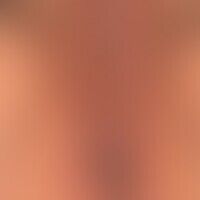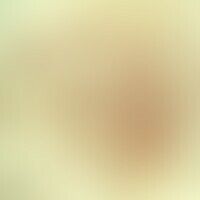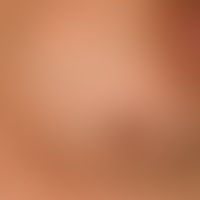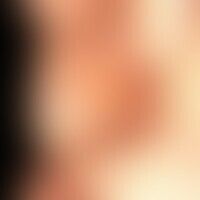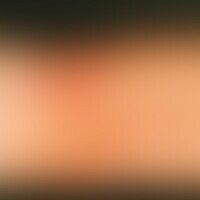Image diagnoses for "Plaque (raised surface > 1cm)"
571 results with 2867 images
Results forPlaque (raised surface > 1cm)

Pityriasis rosea L42
Pityriasis rosea: Collerette scaling: For Pityriasis rosea pathognomonic form of scaling with exactly one ring of fine, slightly raised, whitish scaling about 1-2mm indented from the lateral edge of the reddish plaque.
Note: this form of "keratolytic" desquamation results from the repulsion of superficial, parakeratotic horn lamellae.
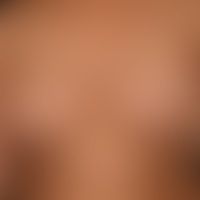
Poikiloderma (overview) L81.89
Poikiloderma: chronic graft versus host disease with bunchy, hyper- and depigmented indurated plaques.
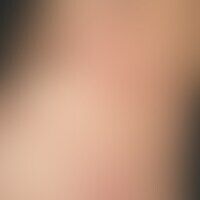
Erythema gyratum repens L53.3
Erythema gyratum repens. chronic dynamic (changeable course for several months), linear, symptom-free, red, rough, slightly elevated linear plaques due to confluence and peripheral growth, which convey a grained overall aspect.
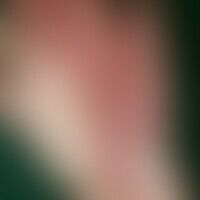
Ilven Q82.5
Cutaneous mosaic dermatosis: In a 7-year-old girl erythematosquamous, hyperkeratotic papules and plaques exist in a linear and planar arrangement since birth.
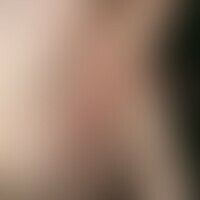
Atopic dermatitis (overview) L20.-
Eczema, atopic. 18-year-old female patient with recurrent retroauricular, strongly itchy, reddish, scaly patches, plaques and rhagades for several years. Multiple immediate type sensitizations exist in case of a positive family history.
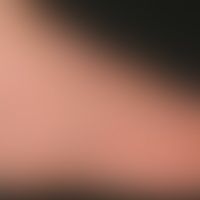
Tinea pedis moccasin type B35.30
tinea pedis "moccasin type": little inflammatory mycosis of the foot. arrows indicate the proximal extensions of the mycosis on the back of the foot. the encircled scaling is also induced by mycosis.
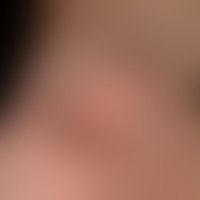
Psoriasis palmaris et plantaris (plaque type) L40.3
Psoriasis palmaris et plantaris (plaque type): A minus variant with affection of the acral thumb area, forming deep and painful (therapy-resistant) rhagades.
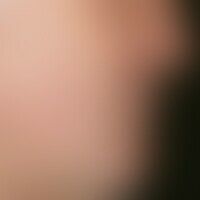
Tinea barbae B35.0
Tinea barbae. scaly, blurred, itchy erythema (incipient plaques) on the cheek and upper lip. erythema areas are sparsely interspersed with follicular papules and pustules.
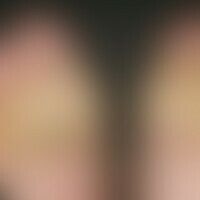
Hand and foot eczema, hyperkeratotic-rhagadiformes L24.9
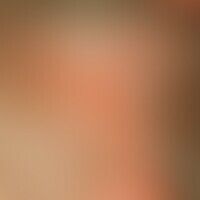
Nevus sebaceus Q82.5
Naevus sebaceus: Hairless spot (plaque) existing since birth in the capillitium of a 4-year-old boy with progressive yellow coloration and increasing thickness growth in the last months.
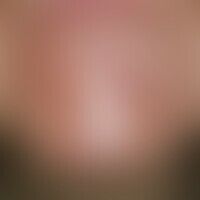
Microcystic adnexal carcinoma C44.L
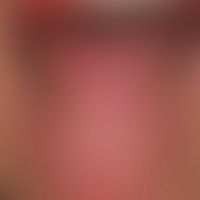
Exfoliation areata linguae K14.1
Exfoliatio areata linguae. for several years alternating, map-shaped, plaque free, red, smooth areas. light burning with acidic food (e.g. fruit juices)
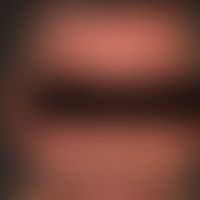
Psoriasis seborrhoic type L40.8
psoriasis seborrhoeic type: recurrent, location-constant and therapy-resistant "seborrhiasis" for several years. no like for atopic disease. extensive infestation of face and capillitium. itching and feeling of tension. note: in case of such an extensive infestation a systemic therapy is recommended (e.g. MTX, alternatively Fumarate).
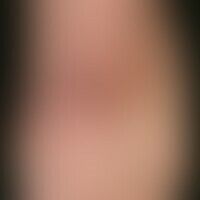
Nummular dermatitis L30.0
Nummulardermatitis (nummular/microbial eczema): Chronically active, 8-week-old, approx. 6 cm large, brownish, raised, partly eroded, partly crusty plaque on the back of the foot in a 54-year-old man. The surrounding skin is reddened.
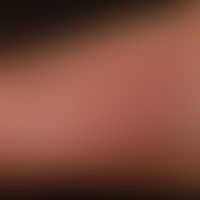
Dyshidrotic dermatitis L30.8
Eczema, dyshidrotic: Chronic recurrent, slightly infiltrated, sharply defined red plaque on the right foot; reddish-brown, sometimes scaly, dot-shaped, older white scaly papules appear in places where water clear vesicles were previously present.

Mixed connective tissue disease M35.10
Mixed connective tissue disease: stripy livid erythema on the back of the hand and the back of the fingers, collagenosis hand.
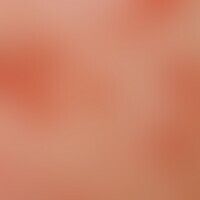
Pemphigus erythematosus L10.4
Pemphigus erythematosus. close-up: reddened papules and plaques with crusty scale deposits.
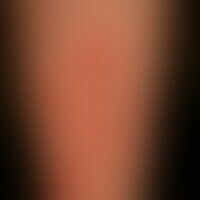
Lupus erythematosus acute-cutaneous L93.1
lupus erythematosus acute-cutaneous: clinical picture known for several years, occurring within 14 days and still with relapsing course at the time of admission. in contrast to the anular pattern on the trunk, irregular, blurred red plaques. in the current relapsing phase fatigue and exhaustion. ANA 1:160; anti-Ro/SSA antibodies positive. DIF: LE - typical.
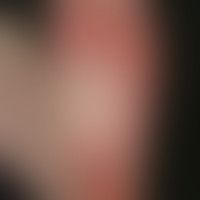
Lichen planus classic type L43.-
Lichen planus (classic type): extensive infestation of the soles of the feet. At the treads, the (classic) morphological structure of the LP is no longer recognizable due to an even confluence of efflorescences. In the area of the hollow foot, diagnosis per aspect is possible.
